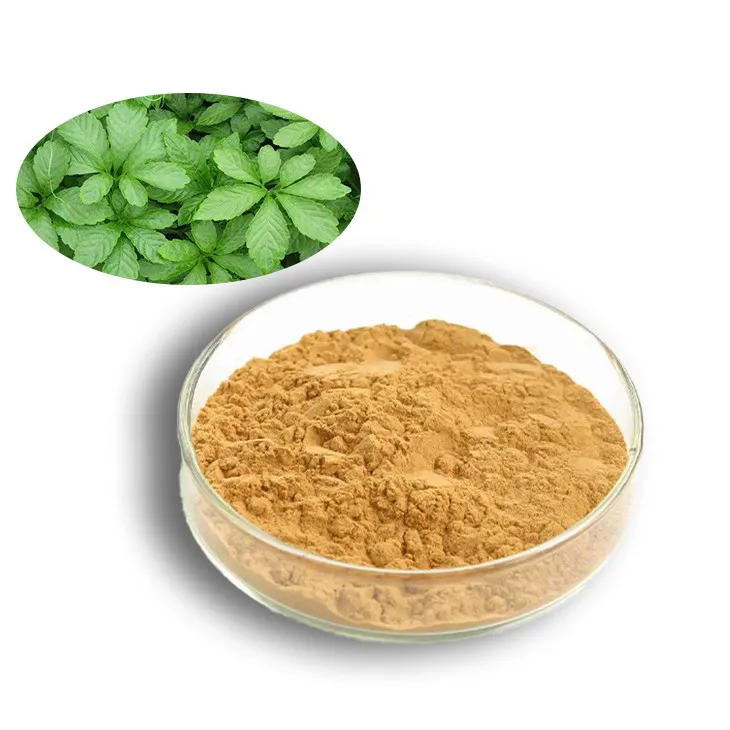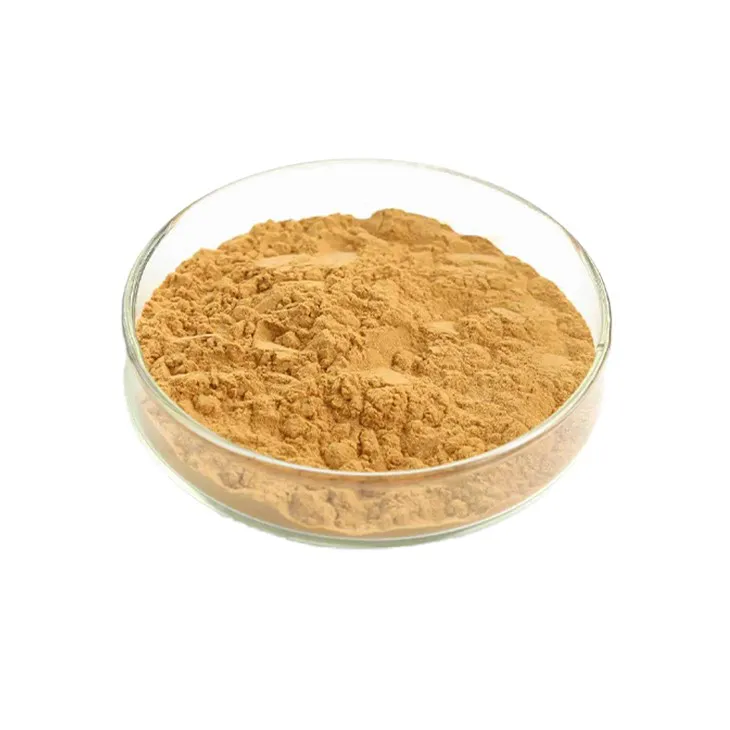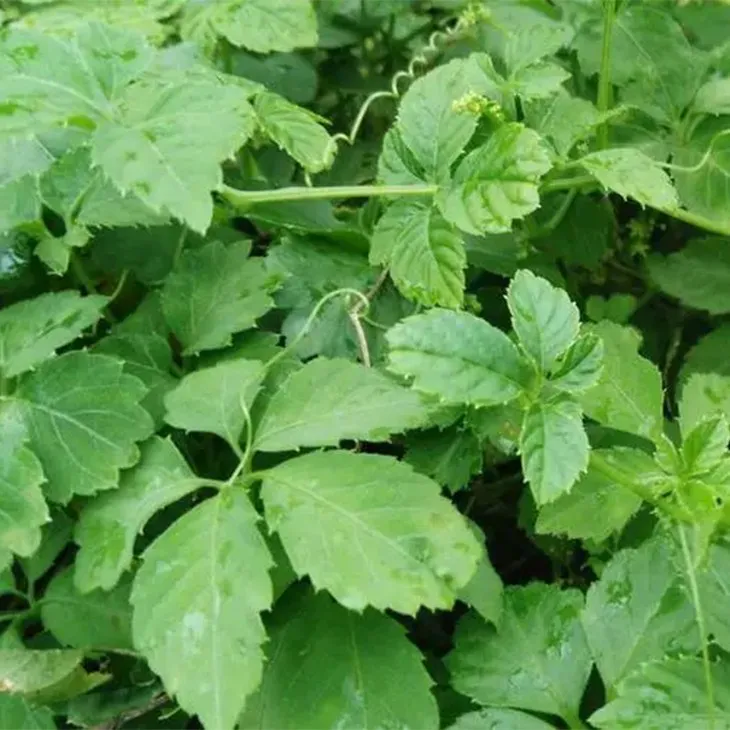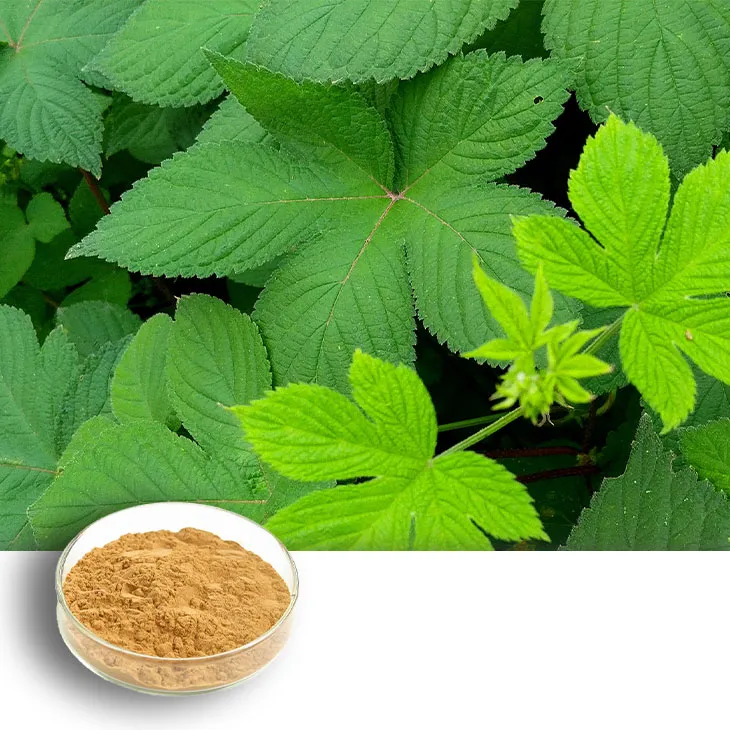- 0086-571-85302990
- sales@greenskybio.com
Benefits of Gynostemma pentaphyllum Extract in Cattle Feed.
2024-11-12

Introduction
In the field of livestock farming, the search for natural additives to improve animal health and productivity is an ongoing endeavor. Gynostemma pentaphyllum, a plant with a rich history in traditional medicine, has emerged as a potential candidate for inclusion in cattle feed. The extract of this plant offers a range of benefits that can have a significant impact on cattle rearing, from enhancing digestion to improving the quality of end - products such as beef and milk.

Rich in Bioactive Compounds for Rumen Microbiota Modulation
Bioactive Compounds in Gynostemma pentaphyllum extract
Gynostemma pentaphyllum extract is known to be rich in a variety of bioactive compounds. These include saponins, flavonoids, and polysaccharides. Saponins, in particular, play a crucial role in the interaction with the rumen microbiota. They have the ability to selectively stimulate or inhibit the growth of certain bacteria in the rumen. For example, some saponins can promote the growth of beneficial bacteria such as Fibrobacter succinogenes and Ruminococcus flavefaciens, which are important for fiber digestion.
Impact on Rumen Digestion
The rumen is a complex ecosystem where microbial fermentation of feed occurs. The modulation of the rumen microbiota by Gynostemma pentaphyllum extract can lead to more efficient digestion.- Improved fiber breakdown: As mentioned, the promotion of fiber - digesting bacteria can enhance the breakdown of cellulose and hemicellulose present in the feed. This is especially important as cattle diets often consist of a significant amount of roughage.
- Enhanced nutrient availability: A well - balanced rumen microbiota can also lead to better release of nutrients such as amino acids, vitamins, and minerals from the feed. This means that the cattle can absorb more of the essential nutrients required for growth, reproduction, and overall health.
- Reduction in methane production: Some studies suggest that the alteration of the rumen microbiota by Gynostemma pentaphyllum extract can lead to a decrease in methane - producing bacteria. Methane is a greenhouse gas, and reducing its production in cattle not only has environmental benefits but can also represent an improvement in energy utilization within the animal, as less energy is lost in the form of methane production.

Antioxidant Properties for Reducing Oxidative Stress
Oxidative Stress in Cattle
Cattle, like all living organisms, are exposed to various factors that can induce oxidative stress. These factors include environmental stressors such as heat, poor air quality, and certain feed components that may contain oxidants. Oxidative stress occurs when there is an imbalance between the production of reactive oxygen species (ROS) and the animal's antioxidant defense mechanisms. ROS can damage cells, proteins, and DNA, leading to a decline in animal health, reduced growth rates, and increased susceptibility to diseases.
Antioxidant Compounds in Gynostemma pentaphyllum Extract
The extract of Gynostemma pentaphyllum contains antioxidant compounds that can help combat oxidative stress in cattle. Flavonoids, for instance, are potent antioxidants. They can scavenge free radicals, which are highly reactive molecules that contribute to oxidative stress. By neutralizing these free radicals, the flavonoids in Gynostemma pentaphyllum extract can protect cells from damage.
Benefits of Reducing Oxidative Stress
- Improved immune function: A reduction in oxidative stress allows the immune system of cattle to function more effectively. The immune cells are less likely to be damaged by ROS, enabling them to better defend against pathogens.
- Enhanced reproductive performance: Oxidative stress can have a negative impact on reproductive organs and functions in cattle. By reducing oxidative stress, Gynostemma pentaphyllum extract can potentially improve fertility, gestation success, and the overall reproductive health of cattle.
- Better growth and development: Cattle with lower levels of oxidative stress are more likely to grow and develop at an optimal rate. They can utilize nutrients more efficiently for muscle and tissue building, leading to increased body weight gain and improved carcass quality.

Potential for Improving Beef and Milk Quality
Impact on Beef Quality
- Fatty acid profile: The use of Gynostemma pentaphyllum extract in cattle feed may influence the fatty acid profile of beef. It can potentially increase the proportion of healthy fatty acids such as omega - 3 fatty acids. These fatty acids are beneficial for human health as they are associated with a reduced risk of heart disease, among other health benefits. This can make the beef more valuable in the market as consumers are increasingly interested in healthier food options.
- Meat tenderness: There is evidence to suggest that the extract can also affect meat tenderness. Through its impact on muscle development and the overall physiological state of the cattle, Gynostemma pentaphyllum extract may lead to more tender meat. Tender meat is highly desirable in the meat industry, as it is associated with better eating quality.
- Color and shelf - life: The antioxidant properties of the extract can also play a role in improving the color stability of beef. Oxidation can cause discoloration in meat, but the antioxidants in Gynostemma pentaphyllum extract can delay this process. Additionally, a reduction in oxidative stress can potentially extend the shelf - life of beef products, reducing spoilage and waste.
Impact on Milk Quality
- Nutrient content: In dairy cattle, the use of Gynostemma pentaphyllum extract may enhance the nutrient content of milk. It can potentially increase the levels of proteins, vitamins, and certain minerals in the milk. This can make the milk more nutritious for human consumption, which is especially important for products such as infant formula and dairy - based health supplements.
- Antimicrobial properties: The extract may also impart antimicrobial properties to the milk. This can help in reducing the growth of harmful bacteria in the milk, improving its safety and quality. It can also potentially reduce the need for artificial preservatives in dairy products.
- Flavor and aroma: There is some indication that Gynostemma pentaphyllum extract can influence the flavor and aroma of milk. A better - flavored milk can be more appealing to consumers, increasing the marketability of dairy products.

Conclusion
In conclusion, the use of Gynostemma pentaphyllum extract in cattle feed offers a multitude of benefits. Its rich bioactive compounds can modulate the rumen microbiota for improved digestion, antioxidant properties can reduce oxidative stress, and it has the potential to enhance the quality of beef and milk products. As the livestock industry continues to seek natural and sustainable ways to improve animal health and product quality, Gynostemma pentaphyllum extract represents a promising option. However, further research is still needed to fully understand the optimal dosage, long - term effects, and potential interactions with other feed components.
FAQ:
1. What are the main bioactive compounds in Gynostemma pentaphyllum extract?
There are several main bioactive compounds in Gynostemma pentaphyllum extract. These include saponins, flavonoids, and polysaccharides. Saponins are known for their ability to interact with cell membranes and can have various effects on biological systems. Flavonoids are antioxidants that can scavenge free radicals and contribute to the overall antioxidant properties of the extract. Polysaccharides may play a role in modulating the immune system and influencing gut microbiota.
2. How does Gynostemma pentaphyllum extract modulate the rumen microbiota?
The bioactive compounds in Gynostemma pentaphyllum extract can influence the rumen microbiota in multiple ways. For example, the saponins may selectively inhibit the growth of certain harmful microorganisms in the rumen while promoting the growth of beneficial ones. This can lead to a more balanced microbial community, which is crucial for better digestion. The extract may also provide substrates or signaling molecules that can directly or indirectly affect the metabolic activities of the rumen microbes, resulting in improved nutrient breakdown and absorption.
3. Can you explain how the antioxidant properties of Gynostemma pentaphyllum extract reduce oxidative stress in cattle?
Oxidative stress in cattle occurs when there is an imbalance between the production of reactive oxygen species (ROS) and the body's antioxidant defense mechanisms. The antioxidant properties of Gynostemma pentaphyllum extract, mainly due to its flavonoids and other antioxidant compounds, work by scavenging ROS. These compounds can donate electrons to neutralize free radicals, preventing them from causing damage to cells, tissues, and organs in cattle. By reducing oxidative stress, the extract helps maintain normal physiological functions and promotes overall health.
4. In what ways can Gynostemma pentaphyllum extract potentially improve the quality of beef?
There are several ways in which Gynostemma pentaphyllum extract can potentially improve beef quality. Firstly, by modulating the rumen microbiota, it can enhance nutrient absorption, which may lead to better muscle development and marbling in the beef. Secondly, the reduction in oxidative stress can prevent lipid peroxidation in the muscle tissue, maintaining the freshness and flavor of the beef. Additionally, it may also have an impact on the fatty acid composition of the beef, potentially increasing the proportion of healthy fatty acids.
5. How does Gynostemma pentaphyllum extract influence the quality of milk products?
The extract can influence milk quality in multiple ways. The modulation of the rumen microbiota can improve the availability of nutrients for milk synthesis, such as proteins and fats. The antioxidant properties can protect the mammary gland cells from oxidative damage, ensuring normal milk production. It may also have an impact on the composition of milk, for example, potentially increasing the content of certain beneficial components like immunoglobulins or bioactive peptides.
Related literature
- The Role of Gynostemma pentaphyllum in Animal Nutrition"
- "Bioactive Compounds of Gynostemma pentaphyllum and Their Effects on Livestock Health"
- "Gynostemma pentaphyllum Extract: A Promising Feed Additive for Cattle"
- ▶ Hesperidin
- ▶ citrus bioflavonoids
- ▶ plant extract
- ▶ lycopene
- ▶ Diosmin
- ▶ Grape seed extract
- ▶ Sea buckthorn Juice Powder
- ▶ Beetroot powder
- ▶ Hops Extract
- ▶ Artichoke Extract
- ▶ Reishi mushroom extract
- ▶ Astaxanthin
- ▶ Green Tea Extract
- ▶ Curcumin Extract
- ▶ Horse Chestnut Extract
- ▶ Other Problems
- ▶ Boswellia Serrata Extract
- ▶ Resveratrol Extract
- ▶ Marigold Extract
- ▶ Grape Leaf Extract
- ▶ blog3
- ▶ blog4
- ▶ blog5
-
Organic Tongkat Ali extract powder factory.
2024-11-12
-
How to make powder with ashwagandha extract.
2024-11-12
-
Rosehip extract manufacturers from China.
2024-11-12
-
The best cat's claw extract in nature.
2024-11-12
-
Chinese Dandelion Leaf Extract Suppliers.
2024-11-12
-
Polygonum multiflorum extract
2024-11-12
-
melatonin extract
2024-11-12
-
Tongkat Ali Extract Powder
2024-11-12
-
Nettle Root Extract
2024-11-12
-
Garcinia Cambogia Extract
2024-11-12
-
Chaste Berry Extract
2024-11-12
-
Berberis aristata Extract
2024-11-12
-
Shikonin
2024-11-12
-
Saponin Extract
2024-11-12
-
Moringa powder
2024-11-12





















